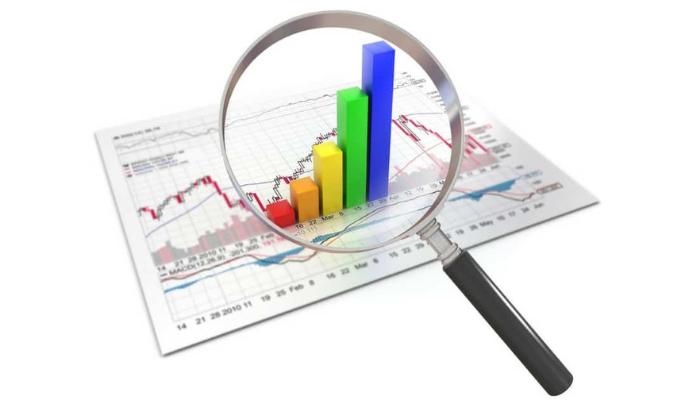What is expansionary and contractionary monetary policy
Monetary policy is one of the most powerful tools available to governments and central banks to influence economic activity. It encompasses a range of measures and strategies aimed at regulating the supply of money and interest rates in an economy.
Advertising
In this article, we will explore the fundamental concepts of monetary policy, including its definitions, objectives, tools, and impact on the economy.
Advertising
Additionally, we will examine examples of expansionary and contractionary monetary policies, highlighting their differences and the crucial role of central banks in this process.
Definition of Expansionary Monetary Policy
Expansionary monetary policy is an approach adopted by central banks to stimulate economic growth and combat recessions.
Advertising
Its main objective is to increase the supply of money in the economy, making it more accessible and cheaper.
This is usually achieved through the reduction of interest rates and the purchase of government securities.
Definition of Contractionary Monetary Policy
On the other hand, contractionary monetary policy is implemented to contain excessive economic growth and control inflation. It aims to reduce the supply of money in the economy, making credit more expensive and restricted.

This is typically accomplished through the increase of interest rates and the sale of government securities. By making credit more expensive, contractionary monetary policy discourages consumption and investment, which helps to control inflation and prevent the overheating of the economy.
Objectives of Monetary Policy
At the heart of monetary policy lies a triad of objectives, each intertwined with the fabric of economic prosperity.
From fostering price stability to nurturing full employment, these objectives serve as guiding beacons for policymakers.
Join us as we dissect the multifaceted goals of monetary policy and their implications for economic well-being.
The main objectives of monetary policy include:
- Price Stability: Ensuring that inflation remains at low and stable levels, thereby promoting consumer and business confidence.
- Economic Growth: Stimulating investment, consumption, and production, creating an environment conducive to sustainable economic growth.
- Full Employment: Contributing to job creation and reducing unemployment, fostering a dynamic and healthy labor market.
Tools of Monetary Policy
Within the arsenal of monetary policy lie an array of tools, each meticulously crafted to wield influence over economic dynamics.
From interest rate adjustments to open market operations, these tools form the backbone of policy implementation.
Join us as we unravel the mechanisms behind monetary policy tools and their nuanced effects on economic trajectories.
To achieve these objectives, central banks use a variety of tools, including:
- Interest Rates: Adjusting short-term interest rates to influence the cost of credit and people’s willingness to borrow.
- Open Market Operations: Buying and selling government securities to control the supply of money and market interest rates.
- Reserve Requirements: Changing the reserve requirements of commercial banks to influence the amount of money available for lending.
- Communication: Providing clear and predictable guidance on the intentions of monetary policy to guide market expectations.
Impact of Expansionary Monetary Policy on the Economy
Expansionary monetary policy can have the following effects on the economy:
- Investment Stimulus: With lower interest rates, borrowing costs for businesses are reduced, encouraging investments in expansion and innovation.
- Consumption Increase: With more accessible credit, consumers tend to spend more, boosting aggregate demand and stimulating economic growth.
- Currency Depreciation: Lower interest rates can lead to the depreciation of the national currency, which can make exports more competitive in the global market.
Impact of Contractionary Monetary Policy on the Economy
On the other hand, contractionary monetary policy can have the following effects on the economy:
- Investment Discouragement: With higher interest rates, borrowing costs for businesses increase, discouraging investments and expansions.
- Consumption Reduction: With more expensive credit, consumers tend to reduce their spending, leading to a decrease in aggregate demand and a slowdown in economic growth.
- Inflation Containment: Increasing interest rates can help to contain inflation by making loans more expensive and discouraging excessive spending.
Examples of Expansionary Monetary Policies
Some examples of expansionary monetary policy measures include:
- Reduction of Interest Rates: The central bank lowers short-term interest rates to stimulate investment and consumption.
- Purchase of Government Securities: The central bank buys government securities in the open market to inject money into the economy and increase liquidity.
- Quantitative Easing: The central bank engages in massive purchases of financial assets, such as government bonds and mortgage-backed securities, to stimulate credit and investment.
Examples of Contractionary Monetary Policies
On the other hand, examples of contractionary monetary policy measures include:
- Increase of Interest Rates: The central bank raises short-term interest rates to discourage consumption and investment.
- Sale of Government Securities: The central bank sells government securities in the open market to withdraw money from the economy and reduce liquidity.
- Increase of Reserve Requirements: The central bank increases the reserve requirements of commercial banks, reducing the amount of money available for lending.
Differences between Monetary Policy and Fiscal Policy
While monetary policy and fiscal policy are both important tools of economic management, there are fundamental differences between them:
- Monetary Policy: Involves controlling the supply of money and interest rates by the central bank to influence economic activity.
- Fiscal Policy: Involves the use of government spending and taxes to influence economic activity, including public investments, subsidies, and tax cuts.
Role of Central Banks in Implementing Monetary Policy
Central banks play a crucial role in implementing monetary policy, being responsible for making decisions on interest rates and conducting open market operations. They also closely monitor economic indicators, such as inflation and unemployment, to adjust their policy as necessary.
Additionally, central banks play an important role in communicating with the public and financial markets to ensure transparency and predictability of monetary policies.
In summary, monetary policy plays a key role in stabilizing the economy and promoting sustainable growth. By understanding the basic principles of monetary policy, we can better appreciate its impact on economic activity and how it influences our daily lives.





